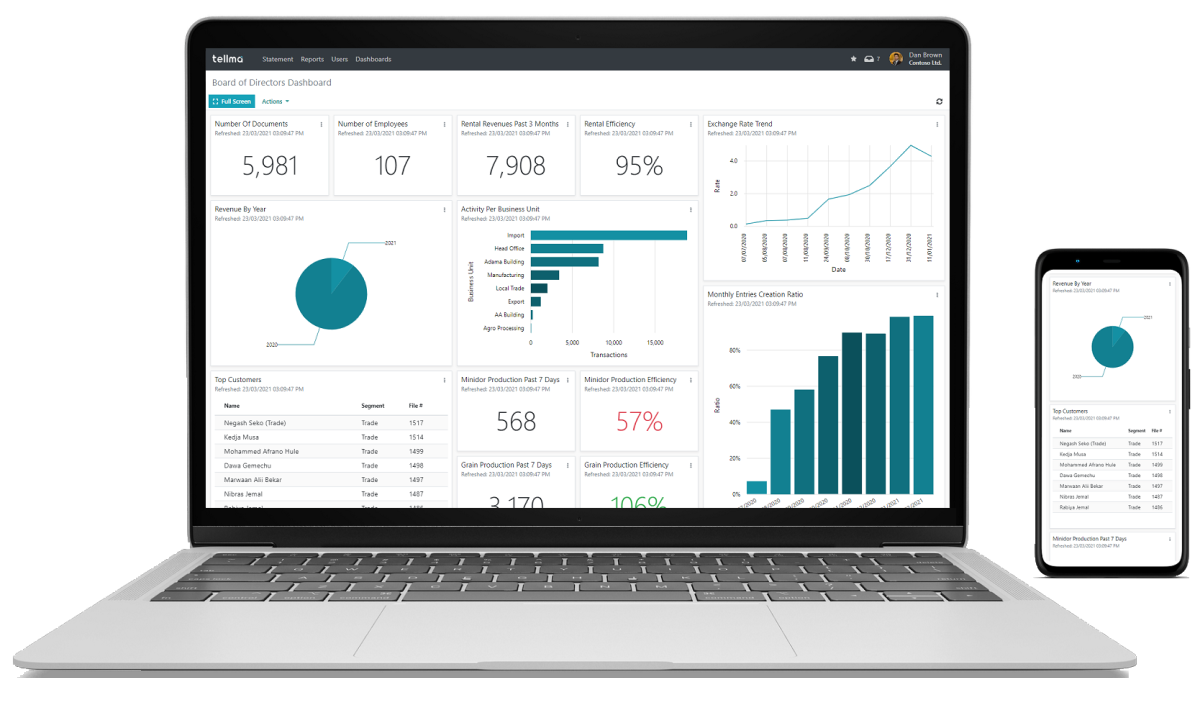For the time being, this document will contain instructions for developers on Windows.
Follow the steps below to set up the solution for the first time.
- Install Visual Studio 2019 (or later) Community Edition with the "ASP.NET and web development" workload
- Install Visual Studio Code from the official website with the Angular Language Service extension
- Install SQL Server 2017 (or later) Developer Edition and make sure it is accessible on "." with Windows authentication
- Install NodeJS (LTS edition) from the official website
- Install Angular CLI globally by running the following in cmd:
npm install -g @angular/cli - Install typescript globally by running the following in cmd:
npm install -g typescript
- Use Visual Studio to open Tellma.sln
- Use Visual Studio Code to open the Angular project in (SolutionDir)/Tellma.Api.Web/ClientApp/
-
Right-Click -> Publish the project Tellma.Database.Admin to a database
[Tellma]on SQL server "." -
Right-Click -> Publish the project Tellma.Database.Application to a separate database
[Tellma.101]on the same server "." setting the SQLCMD variables as follows:SQLCMD Variable Value DeployEmail admin@tellma.com OverwriteDb 1 FunctionalCurrency USD PrimaryLanguageId en SecondaryLanguageId NULL TernaryLanguageId NULL ShortCompanyName Contoso Ltd. ShortCompanyName2 NULL ShortCompanyName3 NULL -
In the Admin database, run the following script:
BEGIN TRANSACTION;
DECLARE @Email NVARCHAR(255) = N'admin@tellma.com'
EXEC [dal].[AdminUsers__CreateAdmin] @Email = @Email, @FullName = N'Administrator'
-- Add [Tellma.101] DB to the sharding catalogue
DECLARE @ServerId INT = (SELECT [Id] FROM [dbo].[SqlServers] WHERE [ServerName] = N'<AdminServer>')
DECLARE @AdminId INT = (SELECT [Id] FROM [dbo].[AdminUsers] WHERE [Email] = @Email)
INSERT INTO [dbo].[SqlDatabases] ([Id], [DatabaseName], [ServerId], [CreatedById], [ModifiedById])
VALUES (101, N'Tellma.101', @ServerId, @AdminId, @AdminId)
-- Add membership for the admin user in [Tellma.101]
DECLARE @DirectoryAdminId INT = (SELECT [Id] FROM [dbo].[DirectoryUsers] WHERE [Email] = @Email)
INSERT INTO [dbo].[DirectoryUserMemberships] ([UserId], [DatabaseId])
VALUES (@DirectoryAdminId, 101)
COMMIT;- Make sure the project Tellma.Api.Web is your startup project (Right-Click -> Set as Startup Project)
- Install all ClientApp npm dependencies as follows: Go inside "(SolutionDir)/Tellma.Api.Web/ClientApp/" in cmd and run:
npm install
Follow these steps to run the solution on your development machine:
- Make sure you pull the latest version of the solution from GitHub
- Make sure the latest version of the admin and app databases are published to
[Tellma]and[Tellma.101] - Make sure the latest ClientApp npm dependencies are installed: Go inside "(SolutionDir)/Tellma.Api.Web/ClientApp/" and run:
npm install - Start the backend server on https://localhost:5001/ as follows: Visual Studio -> Debug -> Start Without Debugging. This should launch a debug console similar to this:
- Start the client app server on http://localhost:4200/ as follows:
- Open cmd
- Navigate to "(SolutionDir)/Tellma.Api.Web/ClientApp/"
- Run
ng serve -o
- Sign in with username:
admin@tellma.comand default password:Admin@123
In your development environment you can use the user secrets of project Tellma.Api.Web to add additional functionality or override any of the default settings in appsettings.json and appsettings.Development.json.
- Right-Click the project Tellma.Api.Web -> Manage User Secrets, this opens a file
secrets.jsoncontaining a JSON object - Add the following properties inside the JSON object:
"EmailEnabled": true,
"Email": {
"SendGrid": {
"ApiKey": "(YourSendGridApiKey)",
"CallbacksEnabled": false
}
}- Replace (YourSendGridApiKey) with a real SendGrid API key, you can grab one for free from SendGrid.
- Right-Click the project Tellma.Api.Web -> Manage User Secrets, this opens a file
secrets.jsoncontaining a JSON object - Add the following properties inside the JSON object:
"SmsEnabled": true,
"Twilio": {
"AccountSid": "(YourTwilioAccountSid)",
"AuthToken": "(YourTwilioAuthToken)",
"Sms": {
"ServiceSid": "(YourTwilioServiceSid)",
"CallbacksEnabled": false
}
}- Replace all placeholders (Your...) with real values, you can grab those values from Twilio
If you want to run the client app server on a port number other than 4200, follow these steps:
- Right-Click the project Tellma.Api.Web -> Manage User Secrets, this opens a file
secrets.jsoncontaining a JSON object - Add the following property inside the JSON object:
"ClientApplications": {
"WebClientUri": "http://localhost:(YourClientPortNumber)"
}- Replace (YourClientPortNumber) with your custom port number
If you want to run the backend server on a port number other than 5001, follow these steps:
- Launch the client app in the browser
- Using the browser's developer tools open the console and run
localStorage.appsettings = "{\"apiAddress\":\"https://localhost:(YourBackendPortNumber)\"}"replacing (YourBackendPortNumber) with your custom port number - Refresh the client app in the browser
- The preconfigured credentials for Google and Microsoft redirect only to http://localhost:5001, so either remove them or add your own credentials for your custom port number:
- Right-Click the project Tellma.Api.Web -> Manage User Secrets, this opens a file
secrets.jsoncontaining a JSON object - To remove the preconfigured credentials, add the following property inside the JSON object:
"EmbeddedIdentityServer": { "Google": { "ClientId": "", "ClientSecret": "" }, "Microsoft": { "ClientId": "", "ClientSecret": "" } }
- Or you can grab your custom credentials from Google Developer Console and Microsoft Azure
- Right-Click the project Tellma.Api.Web -> Manage User Secrets, this opens a file


